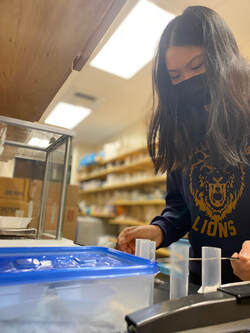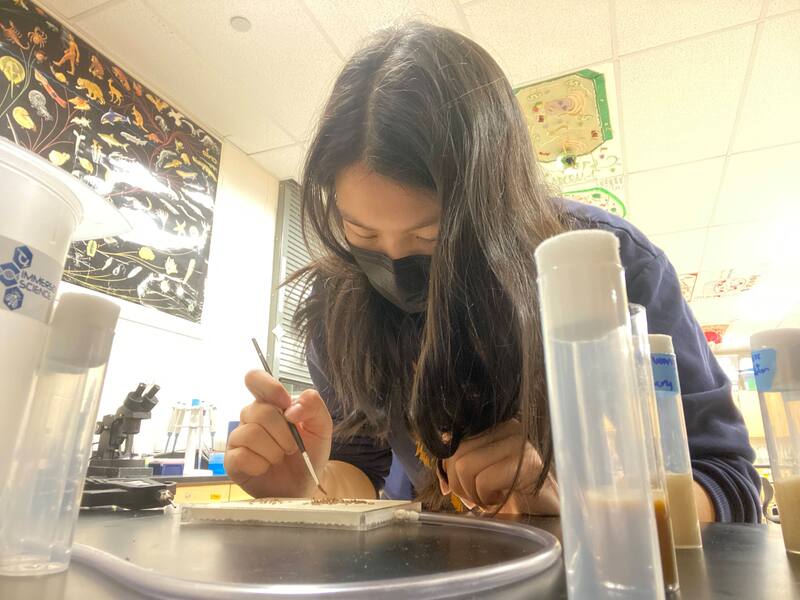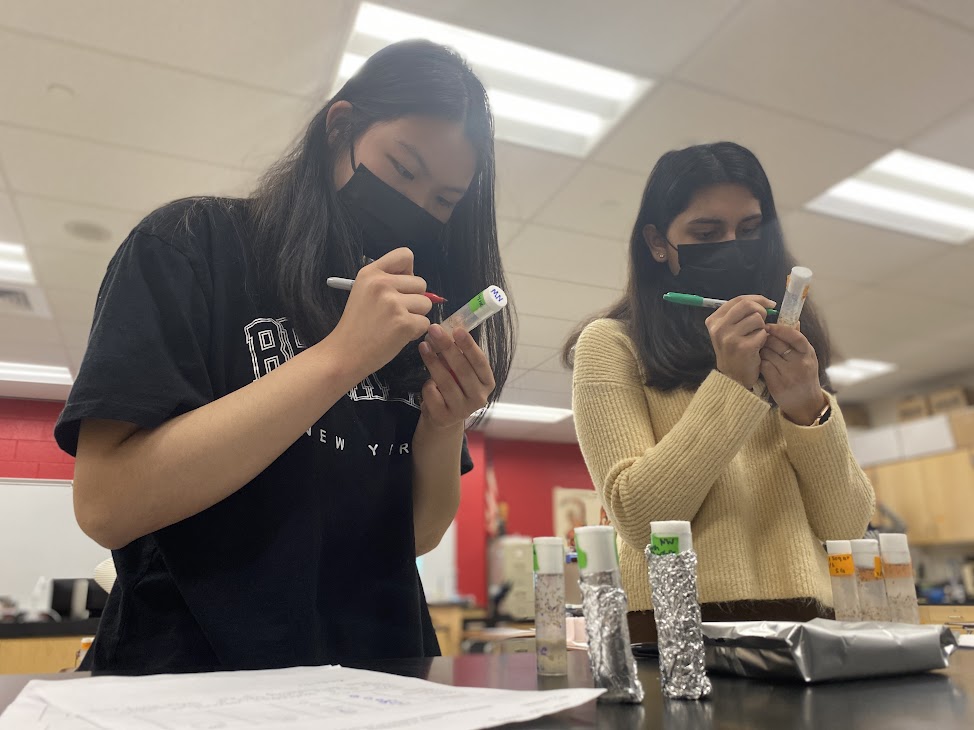|
Hello again! Wow, I can't believe I am already halfway through the program! Last time you heard from me, I was introducing myself and expressing my interest and dedication in the program. Although I have been in the program for only a few weeks, I have learned so many new techniques ranging from effectively presenting my research through a presentation to making serial stock solutions to sorting flies. Recently, I have completed my introduction experiment regarding how Rhodiola and disrupted circadian rhythms affect the mood of fruit flies. Rhodiola is known to increase the energy levels of flies. Disrupted circadian rhythms are known to mess with the sleeping pattern of flies and drain the flies energy. Therefore, I tested whether the drug (Rhodiola) and stressor (constant darkness) would balance each other out and create a positive mood in the flies. The positive mood was tested through the Social Space Assay which quantifies the distance between the fruit flies during time stamps of 5, 10, and 15 minutes. The closer the distance the happier the flies and vice versa. I predicted that the fruit flies would have a positive mood when exposed to both the drug and the stressor. Even though my assay did not go as expected, I still definitely gathered some tips and advice I can utilize next time I perform the assay to make it go much smoother.
This week in TRIP, I am beginning to conduct my very own research project! The questions being tested are “How is fruit fly cognitive development affected by iron? Does iron improve the memory of fruit flies?” What is interesting about fruit flies is that unlike humans who have red blood cells, fruit flies have something different called hemolymph. For fruit flies, the hemolymph acts as a transport medium for the exchange of nutrients and hormones between cells. In addition, iron is supposed to increase blood flow and circulation in humans which then increases cognitive development and attention. Thus, I was interested to see if iron has the same effect on hemolymph as it has on blood, which is how I came to this research topic. I recently just began setting up my four experimental conditions for the experiment and will be conducting my first Larval Memory Assay next week! Until next time when I will hopefully come back with some results from the assay! Thank you for reading!
0 Comments
Yesterday was already our 6th week of TRIP and it feels surreal. When I think about all the things I’ve done (micro pipetting, diluting solutions, and staring at the butt’s of flies to identify their gender), I realize I’ve come a long way.  Another surreal event that happened was that I’ve already decided what I will be doing for my independent project! My experiment asks the question: Can Korean red ginseng help with recovering from sleep deprivation on fertility, development, and motility? I did some research on the benefits of red ginseng and discovered it’s said to have helped with achieving pregnancy, feeling more energetic, and growth. The reason why I chose to experiment on this question goes back to my mom. Ever since we were younger, my mom made our family drink Korean red ginseng juice, a drink that is very popular in many Asian countries. Many Asians - including my mom - believed it was a “miracle drink” that will help you stay healthy. Whenever I was tired, I was given red ginseng. Whenever I was sick, I was given red ginseng. Whenever I had a headache, I was given red ginseng. Red ginseng, red ginseng, red ginseng. This one time I had broken my finger when I fell off my bike and I spread my fingers out to stop myself from slamming into a tree. Unfortunately, I jammed my ring finger into a branch and I heard a crack. I was carried home by my father and guess what I was given? Red ginseng! …I’m just kidding. That last part never happened. But you get how big of a deal it was, right? So, I decided to test whether or not red ginseng actually lived up to its fame and chose a common problem among teens as my stressor - sleep deprivation. With the help of Dr. Purdy and Dr. Leystra (shout out to them!), I determined the daily dose of Korean red ginseng for a fly compared to a human. I had to make two stocks and the concentration was so small that when I had made my stock #1, the drug wasn’t visible at all and it looked like plain water. Next, I mixed the concentration with water and added it to the vials that needed the drug. After that, I did my favorite thing ever: staring at fly butts and sorting them by which had black butts (males) and which had striped butts (female)! Lastly, I placed my stressor vials near an LED lamp and it will continue to sit there until week 7 of TRIP. Personally, I believe that Korean red ginseng will be able to counteract the effects of sleep deprivation on fertility, development, and motility, but we’ll have to wait a couple more weeks for a more credible conclusion. So, stay tuned!
 Hi everyone, it’s Naz! This week our instructors set us off on our ways to perform our independent projects. After a couple weeks of introductory lessons in the lab and getting to know our peers, the time has come to show what we have learned in our experiments. For my personal project, I will be performing the risk-taking assay. This assay was created by a former student from TRIP. The risk-taking assay is an experiment where you test if a fruit fly is willing to take the risk of going into the light and getting food, and in this case, the food is yeast. Flies do not like being directly under a shining light, but in this experiment, I am testing if they will take the risk and do as much as to go directly under the light. To get this exact lighting, I will be covering a petri dish filled with an agar solution, with aluminum foil. In the base of the dish, there will be an agar solution, with yeast in the middle. Once the dish is covered with the foil, I will poke a hole through the center and shine a light through the opening. Once everything is set up, I will set up my phone and a timer, and record how many times the flies actually go to the food. I am setting up 4 petri dishes, one which is a control, one with one drug, one with another drug, and the last with both drugs. My first drug is L-theanine. L-theanine is a main ingredient used in black tea, specifically used to boost the mood. You may be wondering as to why I am interested in using black tea, and it’s because my Turkish background greatly revolves around tea, and Turkish people are generally very outgoing. However, I am not one of those outgoing people, and I do not drink black tea very often. I wondered if these two things had a connection, and therefore came to the conclusion to perform this experiment. If you may have already guessed, the second drug is black tea itself. Since flies are so small, I cannot give them a cup of tea, so I used drug stocks and drug calculations to give the right dosage of each drug to my flies. Once everything is set up, I cannot wait to begin working on this experiment!
|
Archives
April 2024
Categories
All
|





 RSS Feed
RSS Feed